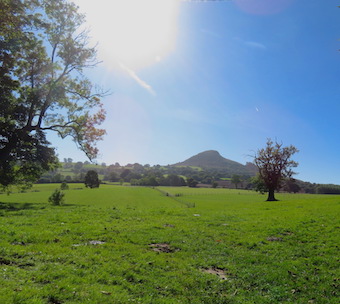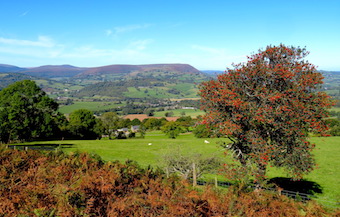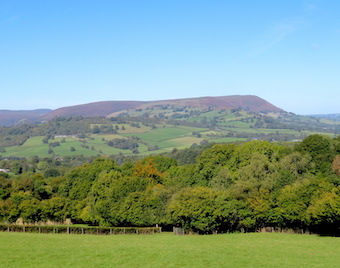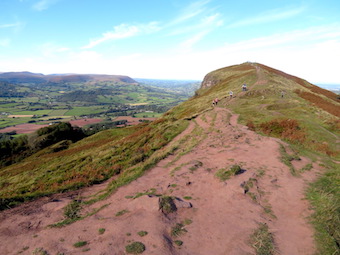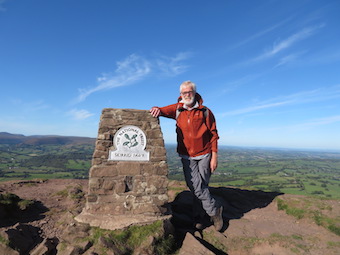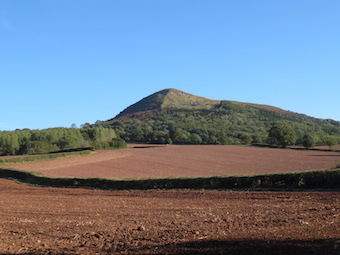First published in: The Times Click here to view a map for this walk in a new window












Facebook Link:

‘Oh, we have people here all the year round to visit the waterfalls,’ said the landlord of the New Inn at Ystradfellte, ‘and a nice Sunday carvery, and that’s how we keep going.’
The New Inn, as warm and welcoming as you’d like every village pub to be, is at the heart of tiny but thriving Ystradfellte, in a cleft of the Brecon Beacons country. It takes a good positive community to keep a pub, post office, church and village hall going these days in such a small and out-of-the-way place.
Brooks trickled and field ditches chuckled with water after last night’s rain. Down at Porth-yr-Og, unearthly groans and roars issued from a cave in which the Afon Mellte went churning and twisting invisibly through subterranean narrows. A file of youngsters in hard hats and caving overalls came up the path, grinning their heads off with excitement at what they’d seen down there.
A narrow, stony laneway, all mud and moss, led us over a green hillside and down into a parallel valley where the Nedd Fechan river rushed beneath Pont Rhyd-y-Cnau, ‘bridge at the ford of the nuts’. Hazels still overhung the water, but squirrels had gathered all the nuts for winter.
We walked upriver beside the Nedd Fechan, feeling its cold breath on our cheeks. The rain-swollen water hurried over rapids, fed by tributaries that tumbled down through the woods in stepped waterfalls. Pwll Du, the black pool, lay quiet, a dark silver disc in a cave mouth at the foot of a crag. We scrambled up a steep little path and teetered along at the rim of the gorge, ducking under silver birch boughs crusty with white and green lichens.
A farm track across the river led up to Cefn-ucheldref, the ‘back homestead’, a lonely clutch of mossy ruins on the hillside. A final crossing of the Nedd Fechan, and we followed an old bridleway eastward over a sedgy upland until the neat white houses of Ystradfellte appeared below in a twinkle of lights through the dusk.
Start: Ystradfellte car park, Brecon Beacons, CF44 9JE (OS ref: SN 930134)
Getting there: Ystradfellte is signed from A4059, 4 miles north of Hirwaun
Walk (6 miles, strenuous in parts, OS Explorer OL12): Right by New Inn, past church; cross river; in 200m, right (932130, stile, yellow arrow/YA). Follow path for 600m to car park (928124). Detour right down zigzag path, then left over stiles to see Porth-yr-ogof cave. At road beyond car park, right; just past ‘Cwmporth’ sign, left (blue arrow, ‘bridleway’) south-west along narrow walled lane.
In 900m at T-junction (921117, blue post), right to road. Left; first right (919117, ‘Nedd Valley’). In 200m, left through gate (unmarked); down steep lane to river at Pont Rhyd-y-Cnau (912116). Don’t cross bridge; turn right (north) on riverbank path. In 500m, at Pwll Du pool and cave (912121), climb narrow path above pool. Follow narrow path, close to fence on right at top of gorge, north for 500m to cross river on bridge below Dyffryn-Nedd (912126).
Up track (YAs) to field (911128); follow track, keeping same height above river. In 500m aim a little left for ruins of Cefn-ucheldref (909135, stile, YA). Right along lane above; in 350m, right on track (908139, unmarked), descending to cross river (911140). Left at road above; in 200m, right (913141, gate, ‘Ystradfellte’ fingerpost).
Half right across field, through gate; follow track. From next gate (914140) follow grassy track; in 150m, fork right. Follow path past occasional posts across open ground. In 300m pass rocky outcrops on left (917139); aim east across big open area, passing left of enclosure with poles (920139), then aiming for gate in angle of walls at far left corner of field (924138). Follow green lane south-west for ½ mile to Ystradfellte.
Conditions: muddy bridleways, narrow path on steep slope from Pwll Du northwards. Boots, sticks, mud-proof legwear!
Lunch: New Inn, Ystradfellte (01639-720211; waterfallways.co.uk) – excellent, friendly pub
Accommodation: Nant-Ddu Lodge, Cwm Taf, Merthyr Tydfil CF48 2HY (01685-379111, nant-ddu-lodge.co.uk)
Info: breconbeacons.org; visitwales.com; satmap.com; ramblers.org.uk


























